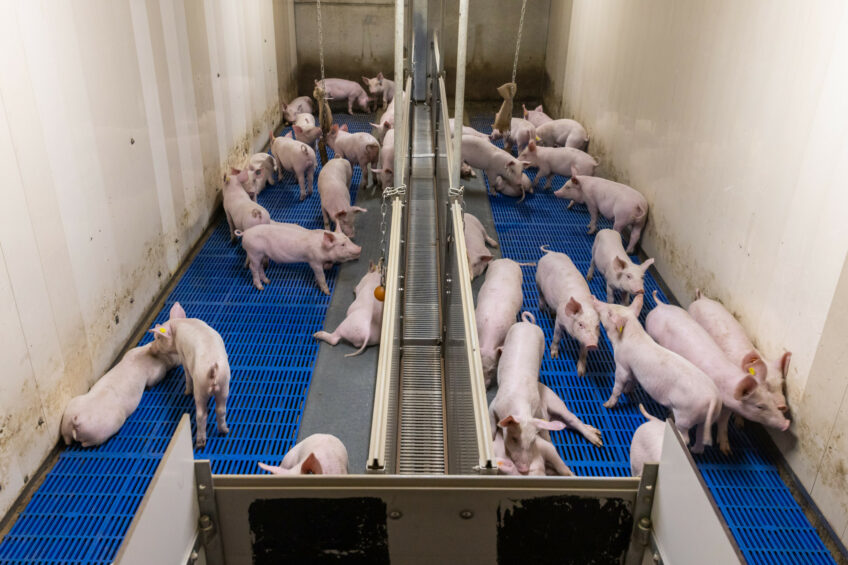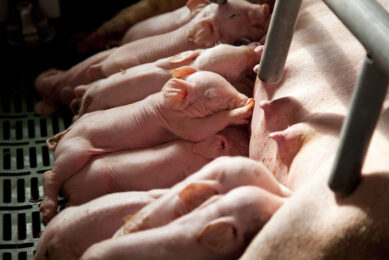Creep feed intake in the farrowing room: What are the benefits?

A long-established feeding practise in the farrowing room is the provision of “creep feed,” which means the provision of feed to piglets while they are suckling the sow. Now what are the benefits? Animal nutrition expert Dr Francesc Molist of Schothorst Feed Research explains that creep feed provision is hypothesised to…
 Increase post-weaning feed intake
Increase post-weaning feed intake
Creep feed provision is aimed to reduce the weaning-associated dip in feed intake by creating a more gradual dietary transition at weaning. There is growing evidence that the amount of feed eaten before weaning positively correlates with the amount of feed eaten and the amount of body weight gain initially after weaning, at least when the same feed is provided before and after weaning.
Additionally, there also seems to be a link between the intake of feed before and after weaning when a different diet is provided after weaning. Creep feed “eaters,” i.e. piglets that consume creep feed, have a shorter latency to eat the “novel” weaner feed after weaning, consume more of the novel feed and gained more weight after weaning compared to “non-eaters” of creep feed. The effects seem most pronounced in the early post-weaning period. Moreover, the studies show that the intake of creep feed stimulates the intake of either a familiar as well as a novel feed after weaning, indicating that proven intake of creep feed indeed seems to familiarise piglets to solid feed before weaning.
The provision of creep feed does not seem related to increased activity of several enzymes
 Develop the gastro-intestinal tract’s function
Develop the gastro-intestinal tract’s function
Creep feed provision is hypothesised to prepare the gastro-intestinal tract for the post-weaning diet by stimulating development of the digestive and absorptive system. However, the provision of creep feed does not seem related to increased activity of several enzymes, such as pepsin produced by the stomach, amylase produced by the pancreas and maltase produced by the small intestine.
It seems more related to a local effect on the morphological changes in the gut integrity or the enzyme activity in the brush-border enzymes. The change in the substrate arriving in the gut of the piglets (milk vs. solid feed) can also shift the bacterial composition of the bacteria in the gastro-intestinal tract.
 Develop the gastro-intestinal tract microbiota
Develop the gastro-intestinal tract microbiota
Weaning from solely sow milk to exclusively solid feed results in a drastic shift in the gut microbiota population from a “milk-oriented microbiome” to a “plant-oriented microbiome.” Creep feed provision may therefore facilitate the dietary change at weaning by stimulating maturation of gut microbiota towards a “plant-oriented microbiota composition,” which may go hand in hand with accelerated intestinal, and therefore metabolic and immunological, maturation. These changes in the microbiota composition can be observed in the caecum and faeces. The older the pigs are weaned, the higher will be the intake and therefore more interaction between substrate and bacteria will occur at the end of the ileum and in the caecum were fermentation will occur.
Still is not clear if the microbiota changes that occur pre-weaning might also have a positive effect post-weaning. Recent studies where for example faecal transplants were tested showed that the colonisation of piglets gut with beneficial bacteria in the first week of life showed positive effect in reducing post-weaning diarrhoea.








